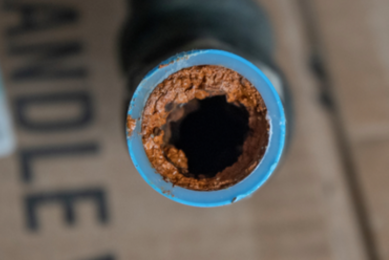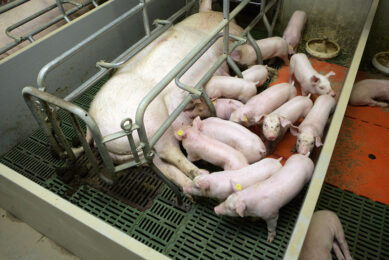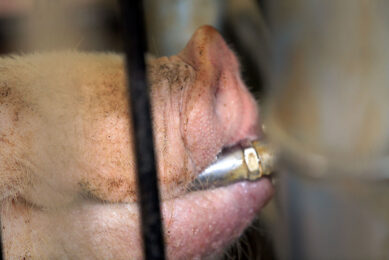Airbag Ventilation
The hot weather is now upon us in the Northern hemisphere. Travelling the world, it surprises me that more producers aren`t using Airbag Ventilation, this valuable ventilation system either as a back-up method to alleviate hot weather stress, or as a full-time device to get over the common problem of over closed-up nurseries (to retain heat) when an icy wind streams around the building in the depths of winter.
The hot weather is now upon us in the Northern hemisphere. Travelling the world, it surprises me that more producers aren`t using Airbag Ventilation, this valuable ventilation system either as a back-up method to alleviate hot weather stress, or as a full-time device to get over the common problem of over closed-up nurseries (to retain heat) when an icy wind streams around the building in the depths of winter.
Why is it so useful?
- It is simple to install.
- Air can be placed exactly where it is wanted.
- The farmer can make 80% of the gear himself, given simple instructions.
- Thus it is cheap.
- Maintenance is easy and accessible.
- The fan(s) runs at a high speed thus overriding outside wind pressure, so the system is windproof.
- The fan is linked to a temperature sensor(s) in the normal way.
- On a permanent installation the system can be designed on a recirculation basis so that in cold weather heat is conserved with a minimal but adequate supply of cold air introduced from the outside.
- In very hot and still conditions the air can be directed directly on to the pigs, thus delaying the introduction of evaporative water cooling. This saves water – expensive to remove as slurry.
What does it consist of?
An ordinary, and cheap propeller fan/fans are situated at the top of a gable end. This leads into a simple air-straightener cylinder inside the building (which can be home-welded). This is needed to remove the twisting of the airbag tube due to the torque from the fan. A tapering tube made from heavy duty (500 gauge) polythene is clamped to the cylinder with a loosening nut to rotate the tube so as to allow the air to be directed where it will do the most good in hot weather or cause least discomfort in cold conditions. The tube runs the length of the piggery. In wide-span buildings more than one airbag is used from their own fan. Tapering the tube ensures the same exit air pressure is obtained both close and far distant from the fan. Given the correct design pattern the producer can easily make the tube/airbag himself – further cost savings. D-shaped holes (called `sipes`) are cut at prescribed intervals down the tube – this ensures even and correct air projection and volume.
An ordinary, and cheap propeller fan/fans are situated at the top of a gable end. This leads into a simple air-straightener cylinder inside the building (which can be home-welded). This is needed to remove the twisting of the airbag tube due to the torque from the fan. A tapering tube made from heavy duty (500 gauge) polythene is clamped to the cylinder with a loosening nut to rotate the tube so as to allow the air to be directed where it will do the most good in hot weather or cause least discomfort in cold conditions. The tube runs the length of the piggery. In wide-span buildings more than one airbag is used from their own fan. Tapering the tube ensures the same exit air pressure is obtained both close and far distant from the fan. Given the correct design pattern the producer can easily make the tube/airbag himself – further cost savings. D-shaped holes (called `sipes`) are cut at prescribed intervals down the tube – this ensures even and correct air projection and volume.
Obviously from the above description some design specifications are needed. These I will provide in my next blog.
This system deserves far better recognition than it seems to be getting. I hope I can encourage you to try one and see.











